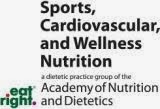ZUCCHINI PASTA IS A GREAT LOW CALORIE MEAL
Since my son is managing his weight for the 2015 wrestling season, I thought the Zucchini Pasta would be a great low calorie meal. Fueling a teen athlete who is maintaining a weight cut is not easy. I hear too many parents tell me that their son didn’t eat last night or all day so they could make weight. How do you have the strength to compete if you are not eating correctly. One thing is for sure, that’s the fastest way to getting injured!
BALANCE CALORIES WITH NUTRIENT DENSE FOODS
This year,
John is eating through all his matches. After the first two years, we learned
quickly how to balance calories while packing in nutrient dense foods to
provide energy for schoolwork, training, practices, muscle endurance, strength,
repair, and recovery. Zucchini Pasta with grated Pecorino Romano cheese is a
great source of energy packed carbs, protein and healthy fats. Besides …It’s
easy to make, it doesn’t take long to make, And more importantly, it's
really tasty! Zucchini Pasta is a great vegetarian meal to work into
your weekly repertoire of Meatless Mondays or Veggie Fridays. So here’s my
recipe…
EASY SPIRALIZED ZUCCHINI PASTA
Serves
Four To
start, there is only have 8 ingredients, seven of which I keep on hand at all
times:
• Three medium zucchini
• ½ yellow onion
• 6 cloves of garlic
• 2 Tbs Olive Oil
• ¼ Cup low Sodium Vegetable Stock
• 1 can (28 oz) of Muir Glen Organic Fire Roasted Diced Tomatoes
• ¼ cup freshly chopped/torn basil
• ½ cup of grated Pecorino Romano cheese
• ½ yellow onion
• 6 cloves of garlic
• 2 Tbs Olive Oil
• ¼ Cup low Sodium Vegetable Stock
• 1 can (28 oz) of Muir Glen Organic Fire Roasted Diced Tomatoes
• ¼ cup freshly chopped/torn basil
• ½ cup of grated Pecorino Romano cheese
Gather all
your ingredients, pull out a 12” non-stick fry pan, and fit the mid-sized blade
onto your Spiralizer. Thinly slice 1/2 yellow onion, diced six cloves of
garlic. Fry the onion and garlic in the 2 Tbs of olive oil (two turns around
the pan - I use my 12" fry pan). After the onion and garlic get a tiny bit
browned, add 1/4 cup low sodium vegetable stock. Keep frying on a medium heat
until the onions are transparent. While the onion and garlic were frying,
I Spiralized three medium zucchini (with skin). I chose the next to the largest
Spiralizer blade so the zucchini spirals could withstand being tossed with the
tomato sauce. I put all of the Spiralized zucchini in the new pasta bowl that
my children got me for Christmas this year.
Next, pour one can (28 oz) of Muir Glen Organic Fire Roasted Diced Tomatoes, with juice, over the into the frying pan, right over the sautéed garlic and onion. Keep the heat on medium to soften the tomatoes.
Every once and awhile, smash down the tomatoes with a spatula to form more of a sauce-like texture.
Next, pour one can (28 oz) of Muir Glen Organic Fire Roasted Diced Tomatoes, with juice, over the into the frying pan, right over the sautéed garlic and onion. Keep the heat on medium to soften the tomatoes.
Every once and awhile, smash down the tomatoes with a spatula to form more of a sauce-like texture.
A DELICIOUS LOW CALORIE MEAL!
Once the
sauce became a little thicker (by cooking about 15 minutes), turn off the heat,
grab your bowl of Zucchini Pasta, and pour the sauce over the zucchini. Next,
add the fresh basil, and toss with some Pecorino Romano cheese (skip if you
want to go totally vegan - but then you may need a dash of salt). Serve with a
salad full of escarole, romaine, sliced red peppers, shredded carrots, lemon
juice and 2 Tbs of basil infused olive oil and you have one delicious, low
calorie meal!
Elizabeth Candela is a graduate of Rutgers’ School of Environmental and Biological Sciences with a Bachelor of Science degree in Environmental Science. Her studies at Rutgers led Elizabeth into employee health and safety, and she worked several years as a Safety Engineer in Risk Management. In 2007, after achieving a Master of Art from Montclair State University, Elizabeth taught high school Biology, Environmental Science and Physics. Then, in 2009, Elizabeth developed a portable core fitness device, and since has secured a United States Patent. The development of this device drew her into the Exercise and Nutrition field, so she left the teaching profession to pursue postgraduate courses in Nutrition and Exercise Physiology. Since then, Elizabeth has achieved her New Jersey Registered Dietitian Nutritionist Certification, as well as her American College of Sports Medicine Exercise Physiology Certification. By maximizing her training and fitness through sound nutritional principles, Elizabeth continues to challenge herself physically and nutritionally through her commitment to run a half marathon in every USA state, and six World Marathon Majors.
Checkout My Website: https://www.beyondnutrition-
Follow Me on Twitter: https://twitter.com/


